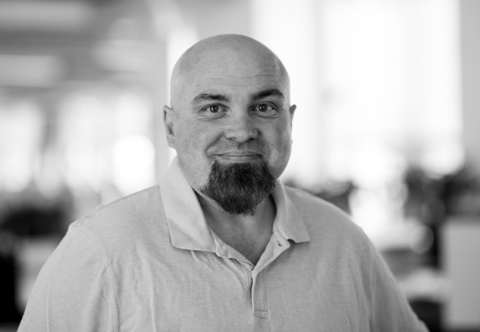Visualization at PAYETTE has grown beyond the boundaries of solely creating renderings. We are using digital applications to aid or solve design challenges. For example, we recently used our virtual reality tools to help communicate and facilitate design options for our Fifth XiangYa Hospital.
Physical mockups are often used to test out designs and material selections. These mockups are full-scale renditions of specific segments of what will be constructed. A mockup at full scale provides designers and clients a clear and precise opportunity to experience what will eventually be realized once construction is complete. For this particular project, however, our Visualization Group decided to build an interactive digital VR mockup of façade options to give the user the opportunity to experience the five distinct design options as you would feel approaching the constructed building – not something achievable through a rendering or physical model.
We invited the local architect to our office for a two-day work session and built two virtual reality experiences to effectively communicate ideas and jumpstart the conversation for specific areas of the design. One build included the whole site, both the General and VIP hospitals, and a percentage of interior spaces. The second build was focused on the façade and the multiple façade designs that were up for discussion.
In anticipation of the meeting, the models went through several iterations and study through group conversations. Impromptu meetings in VR have become a normal happening in our office. Designers at all levels take turns inside the headset sharing their ideas and comments based on their own perspective. Architects are trained to study the smallest details and respect how they might affect future users of our spaces. VR provides an opportunity unlike any other for designers to get up close and personal with a specific part of the project.

The interactivity of this VR experience is what makes it an exceptional communication tool. For the Fifth XiangYa Hospital, the users were shown five distinct façade designs. The build showcased a small section of the hospital including the podium and all floors of the bed tower. We needed to create a way to allow them to scroll through the designs seamlessly and at their own discretion. By building custom scripts that perform multiple tasks behind the scenes, the VR models delivered a seamless experience, and our design team was able to make an informed design for the façade.


